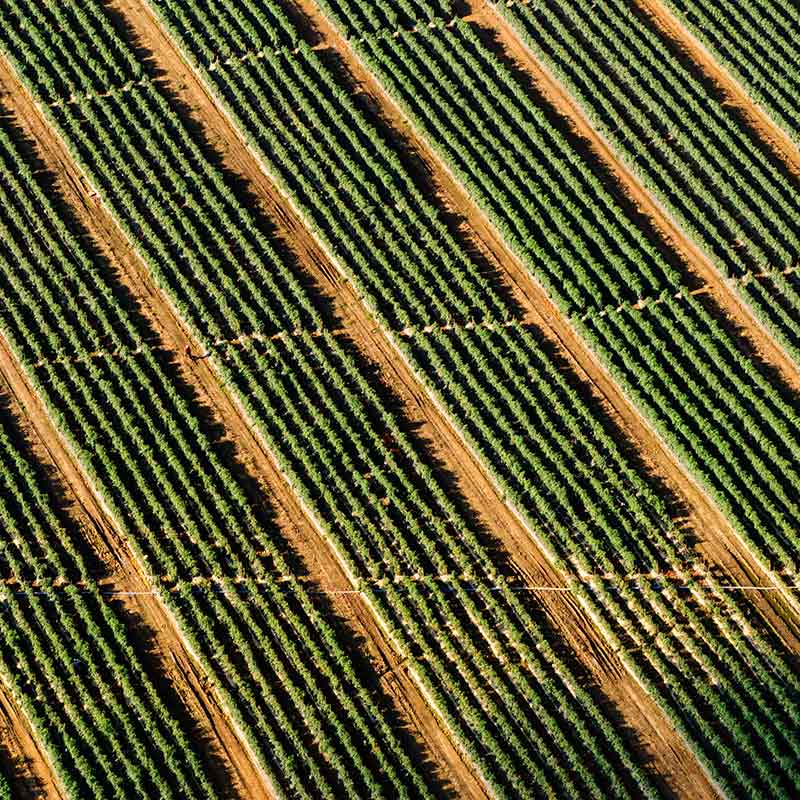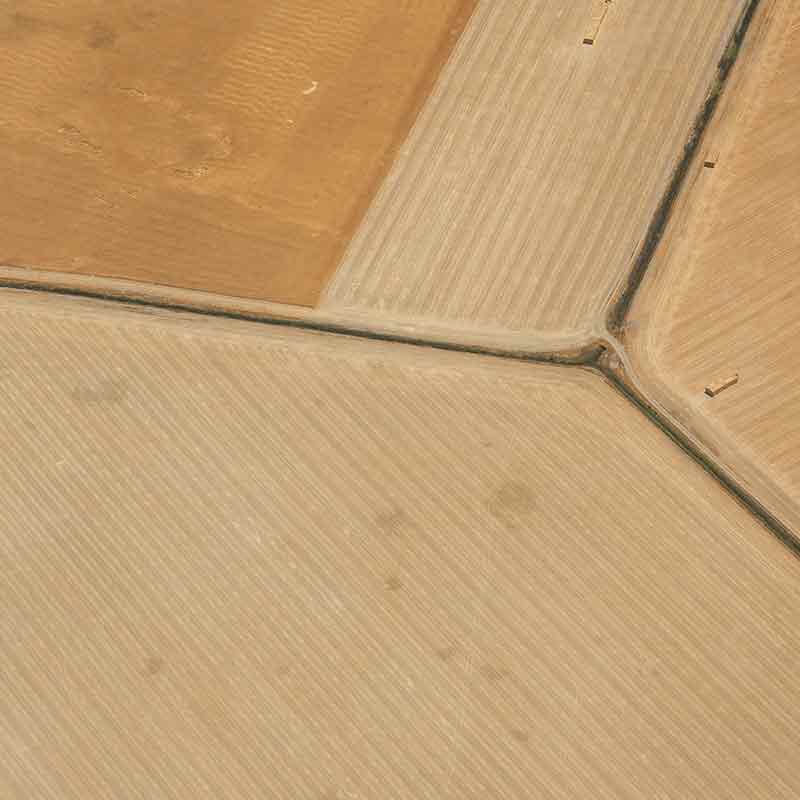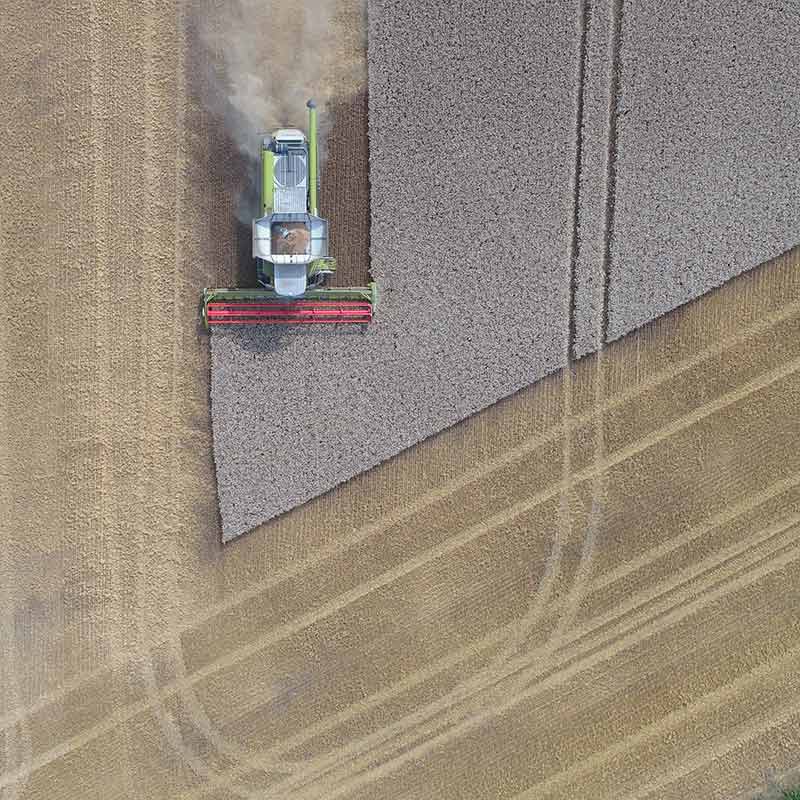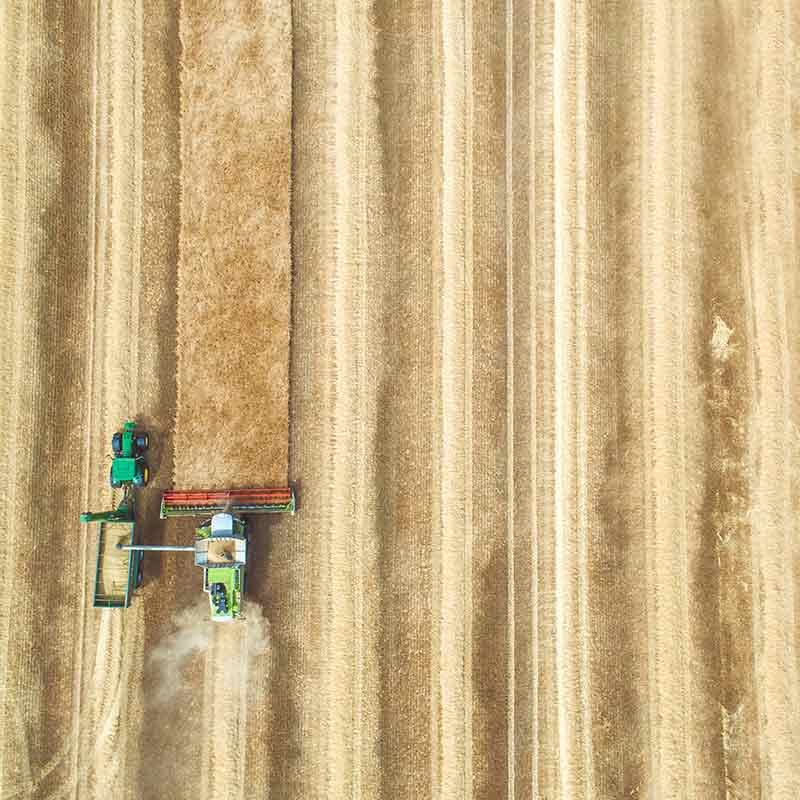Set goals & objectives: agriculture
About this step
You’ve identified that you have an opportunity to improve the sustainability of your agricultural supply chains and are now ready to make some changes. What’s next? If your company is new to the concept of sustainable agriculture, it could feel daunting to set an ambitious, scientific goal aligned with your core business. The good news? There are many resources to help!
Building off of Step 1 and Step 2 in our “Build a sustainability plan 101” guidance, we wanted to go a bit deeper to help you set meaningful goals for your agricultural supply chains.
Goals should be ambitious
Ambitious sustainable agriculture goals should be focused on eliminating water quality impacts, avoiding water overuse and mitigating greenhouse gas emissions in supply chains. Your goals should target these impacts in all your major crops that are critical to the production of your final product as an ingredient (e.g., row crops are feed for livestock) or as the product itself (e.g., almonds).
These should address the main geographic hotspots for these environmental impacts:
- Water-stressed areas, like the Ogallala aquifer and California’s Central Valley.
- Nutrient-laden water bodies, like the Gulf of Mexico, Chesapeake Bay and Lake Erie.
- Areas of condensed emission losses from over-fertilization, sub-optimal land management or animal production.
Best-in-class goals go beyond the company’s direct supply chain and commit to partnering with local natural resource organizations, governments and other stakeholders working to reduce agricultural negative impacts and increase positive impacts on the ground. Other ambitious goals may be combined with procurement or sourcing goals.
While historically sustainable agriculture commitments have focused on getting “sustainable practices” on a certain acreage, ambitious goals should relate to climate and water outcomes that a company wants to achieve. As you scope out your goal, we encourage you to determine what metrics will be easier to collect to demonstrate progress. This will depend on your level of visibility into your supply chain. It makes little sense to set a goal in which you cannot measure your company’s progress towards. In agricultural supply chains, often companies will start with proxy metrics to demonstrate change in the broader agricultural system. We are beginning to see outcome-based goals and new ways of tracking and reporting on progress.


Goals should be time-bound
Time-bound goals need to keep agricultural realities in mind. Many corporate commitments have 2025 or 2030 timelines, recognizing that changes in agricultural supply chains take time. Often, agricultural producers can make investments in technologies, inputs or practices that will yield results after 5-10 years. This makes it difficult for companies wishing to see immediate changes in the agricultural landscape. That said, as technologies improve, more and more agricultural supply chain partners have been implementing sustainable practices and programs that will catalyze faster change in this realm. One way to address this is to create interim goals or objectives that are more of a bite-size piece of what you’re trying to achieve. It can help to show progress or to show how there may be multiple phases to achieving a major goal.
Aligning business and environmental goals
Sustainable agriculture goal should be aligned with your company’s other goals, such as those for climate and water. Agriculture is a major driver of climate emissions, therefore it can be a massive opportunity for meeting these goals. Companies should align their sustainable agriculture commitments into any preexisting climate goals. This requires including supply chain goals into baselines for your larger climate or water goal-setting, and integrating your agriculture supply chain progress into your existing climate goals. The Food and Agriculture Organization of the United Nations can help you learn more about “climate-smart” agriculture.
Objectives and goals: following industry norms
You do not need to reinvent the wheel with your goals, as many companies have already set agricultural commitments that you can use as a model and benchmark for industry norms. Some resources to assess or make commitments include:
A set of common norms and guidance for establishing, implementing and monitoring responsible supply chain commitments.
Through tis challenge, companies can receive support in analyzing water issues within their supply chains, and in refining or making new sourcing commitments that enable them to better address their risk.
A Walmart initiative to avoid one billion metric tons (a gigaton) of greenhouse gases from the global value chain by 2030. To join the Agriculture pillar of Project Gigaton, your company should commit to reduce emissions at the farm level. Examples of areas you could target include: fertilizer optimization in fields or adoption of animal agriculture best practices to reduce enteric and manure emissions, optimize feed production and improve soil health.


Key performance indicators (KPIs) for sustainable agriculture
The most common agricultural supply chain goals emphasize sustainable sourcing of commodities. For example, with corn or soy in the United States, the most common KPIs for these crops measure the percentage purchased from producers implementing conservation practices that reduce water quality impacts, use less water or mitigate greenhouse gas emissions.
There are a plethora of organizations, certifications and standards that can assess the results of a sourcing policy, although few verify desired environmental outcomes:
- The World Resources Institute (WRI) identified a list of indicators that are helpful for tracking progress and motivating actors toward a sustainable food future.
- WRI, along with other NGO partners like The Nature Conservancy (TNC), World Wildlife Fund (WWF) and The Sustainability Consortium (TSC) can help with goals, objectives and metrics for agricultural sustainability.